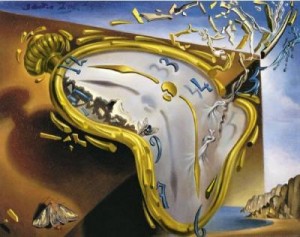Here’s a riddle for you: What do sleep cycles, seasons, lunar cycles, music, tides, space-time strings, and rotation of the earth, planets, and sun have in common with outstanding, sustainable business results?
The answer is rhythm.
Nearly everything in the world around us has a rhythm. We are surrounded by it and permeated by it and it appears to govern everything. Everywhere we look there is rhythm, and as more and more businesses are discovering, it is one of the most important components of consistent, sustainable excellence and can be turned into a significant competitive advantage.
But rhythm is something that has been largely cast aside and forgotten in our work culture and lives. Breaks, evenings, weekends, and vacations have all fallen victim to our ultra-competitive, 24/7, always-on, always-connected lifestyle and work culture. By recognizing and respecting the natural rhythm of your body and brain, you can realize some fairly dramatic performance improvements in every dimension – the mental, physical, creative, and emotional facets of your life. And this principle is just as important and effective for teams as it is for individuals.
I know what you are thinking. This sounds pretty squishy right? Wrong. There is a mountain of hard science behind this and organizations like Sony, Wachovia, Google, and NASA are proving it, year in and year out.
So what are we talking about here? No, not drumming circles – not that there is anything wrong with that – but simply this: by creating a rhythm between intense energy output and recovery (meaning relaxation or energy creation activities), you will see a significant improvement in your energy level, physical performance, creativity, mental acuity, and emotional stability/resilience. Did I forget to mention higher levels of engagement and happiness? Those too.
Think of it this way: If you are trying to build muscle, do you go to the gym and pump iron for 10 to 12 hours until you collapse? Of course not. That will make you weaker and likely will injure you. Instead, to build strength and endurance, you perform short, intense bursts or sets that push your limits. Those are followed by a period of relaxation and recovery. When you come back next time, you are stronger with more stamina and resilience.
This same principle governs your performance in each dimension of your life. By replacing work marathons, work-through lunches, and interminable meetings with shorter sprints, followed by short periods of relaxation/recovery you become physically stronger with more endurance. It will activate and fuel your creative process; it will keep your mind sharp and engaged, and keep you emotionally grounded and resilient. It is also sustainable, keeps you balanced and healthy, and keeps stress (and its poisonous effects) at a minimum.
Each of these benefits has a direct impact on employee engagement (which has been dropping significantly in recent years – possibly as a result of the unsustainable nature of many work environments) and employee engagement is something you should be paying attention to. According to Aon Hewitt, companies with high levels of employee engagement outperform the total stock market index and post total shareholder returns 22% higher than average. Companies with low engagement post returns 28% lower than average! That is why Velocx has chosen to emphasize this training as a key differentiator in our spectrum of offerings to employers.
Putting Rhythm Back in Your Life
Try using this simple formula when organizing your day and prove to yourself how effective it is:
• Work in short intense bursts 1 ½ – 2 hours
• Try to focus on one thing at a time and avoid multi-tasking (news flash: it doesn’t work)
• Follow with a 15-30 minute energizing break (walking, meditation, reading, chatting with co-workers – anything that you find relaxes and/or energizes you). Even 5 minutes of slow, deep breathing, can make a huge difference between sets.
It is very easy to be seduced by the idea that if you could only work harder, work longer, and figure out how to squeeze a few more hours out of your personal time and family life (just this week of course), you could get ahead and get on top of that pile of work.
But everything we’ve learned about how our brains and bodies work over the last few years says differently. Alternating between intense work focus and recovery will improve your productivity, output, and creativity. Sure, sometimes you need to skip lunch, put in that all-nighter, or work through the weekend, but if you want your brain and body to be working at their best, if you want to elicit your top performance and sustain it over the long term, you need rhythm.






